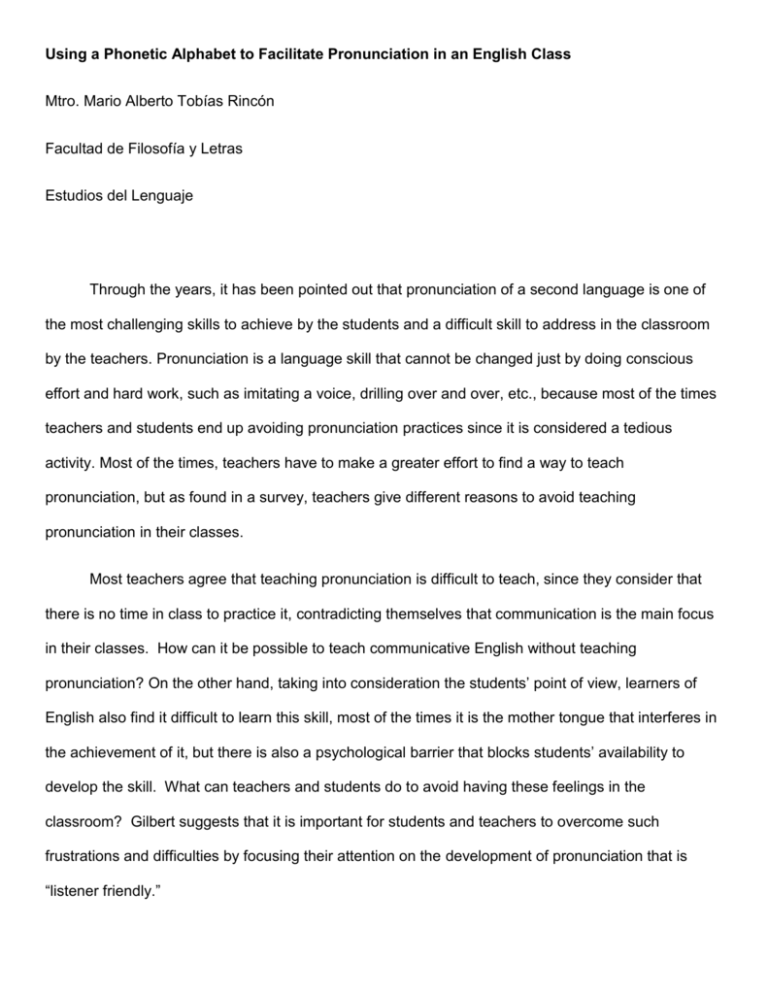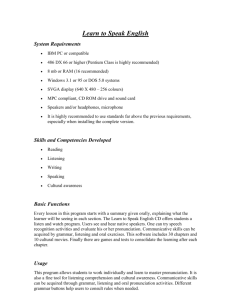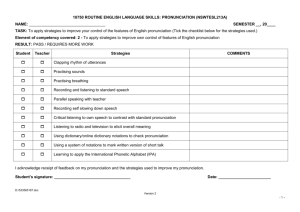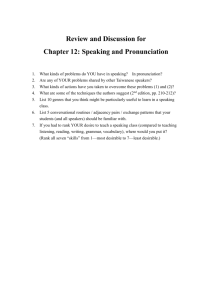Using a Phonetic Alphabet to Facilitate Pronunciation in an English
advertisement

Using a Phonetic Alphabet to Facilitate Pronunciation in an English Class Mtro. Mario Alberto Tobías Rincón Facultad de Filosofía y Letras Estudios del Lenguaje Through the years, it has been pointed out that pronunciation of a second language is one of the most challenging skills to achieve by the students and a difficult skill to address in the classroom by the teachers. Pronunciation is a language skill that cannot be changed just by doing conscious effort and hard work, such as imitating a voice, drilling over and over, etc., because most of the times teachers and students end up avoiding pronunciation practices since it is considered a tedious activity. Most of the times, teachers have to make a greater effort to find a way to teach pronunciation, but as found in a survey, teachers give different reasons to avoid teaching pronunciation in their classes. Most teachers agree that teaching pronunciation is difficult to teach, since they consider that there is no time in class to practice it, contradicting themselves that communication is the main focus in their classes. How can it be possible to teach communicative English without teaching pronunciation? On the other hand, taking into consideration the students’ point of view, learners of English also find it difficult to learn this skill, most of the times it is the mother tongue that interferes in the achievement of it, but there is also a psychological barrier that blocks students’ availability to develop the skill. What can teachers and students do to avoid having these feelings in the classroom? Gilbert suggests that it is important for students and teachers to overcome such frustrations and difficulties by focusing their attention on the development of pronunciation that is “listener friendly.” There are different techniques that teachers can use for teaching pronunciation in order to help students to face the different number of challenges when learning a new language. Learners need to be taught pronunciation in a communicative method. Unfortunately, there has been little development of a communicative method for teaching pronunciation. There are two purposes in this talk, the first one aims in explaining the reasons of why pronunciation is one of the least liked skills in the language classroom taking into consideration teachers’ and students’ opinions. The second purpose is to provide some different techniques a teacher can use to help students avoid those pronunciation problems, focusing mainly on the importance of using the phonetic alphabet everyday within the class being presented.







